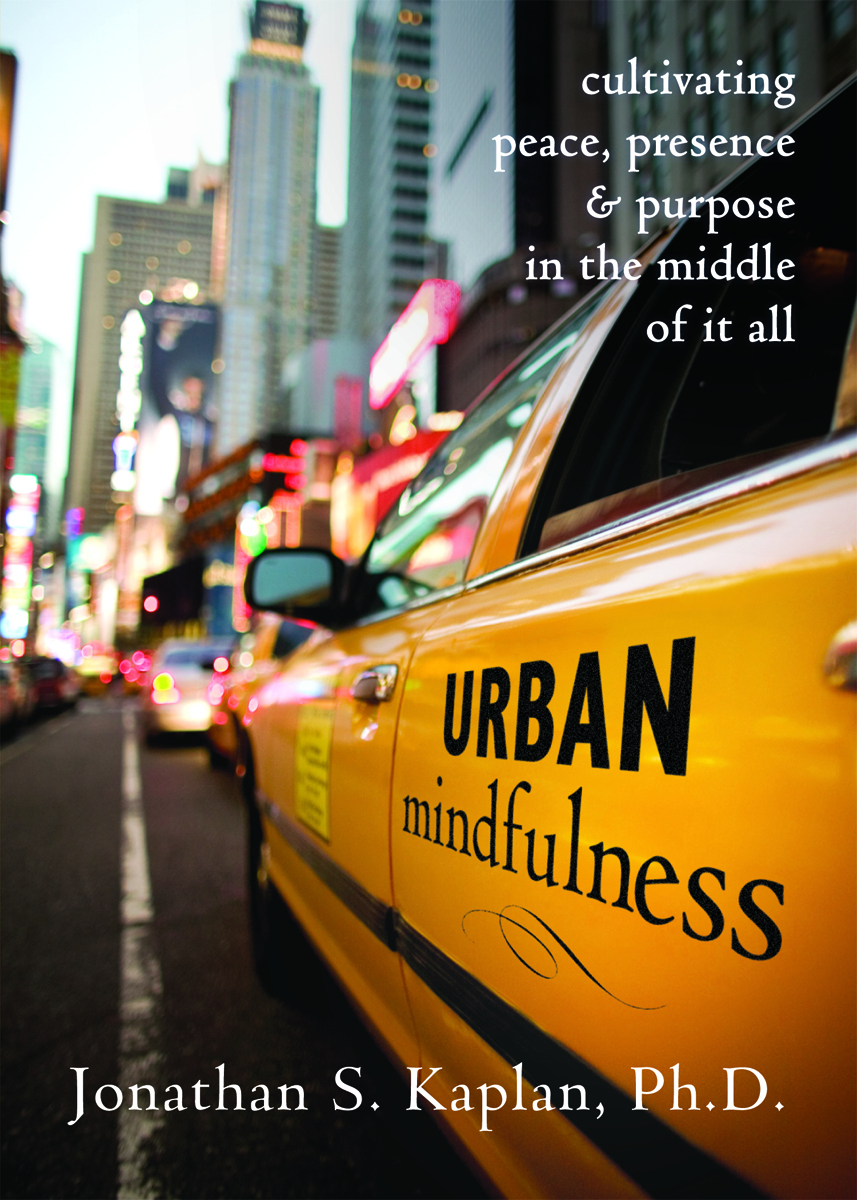If you’re looking for a wonderful compilation of exercises and reflections on practicing mindfulness in the city, then look no further than Urban Mindfulness–the book! Written by Dr. Jonathan S. Kaplan and published in 2010, this book has many practical suggestions, including how to meditate on the subway, how to text mindfully, and how to deal with noisy neighbors. Reader reviews have been very positive, and it makes a wonderful present for “that special (stressed-out) someone.” You can help support this site, by buying a copy today!
Urban Mindfulness at PsychologyToday.com
At PsychologyToday.com, Dr. Kaplan maintains a blog on the practice of mindfulness and meditation in urban settings. While some of the posts are similar topic-wise to what he discusses here, he also has many unique entries. Generally speaking, these posts incorporate more scientific research, too.
Handout Downloads
Why should “tasting” be applied only to wine? What about your bagel with a shmear or the salad from the bodega? Ideally, we would take time to taste whatever we decide to eat or drink. Presumably, we chose it because it was something that we thought would be delicious and satisfying. Yet, all too often, we race through our meal or distractedly engage in another activity, like conversation, checking e-mail, or watching T.V. In this exercise, you will pay purposeful attention to the process of eating. In 1990, I learned this practice while sharing a meal with the Zen monks at Syorinzan Daruma Temple in Japan. Click on the title above for the “pdf” file.
We are surrounded by objects. Typically, we gloss over the details of these objects in order to simplify an already complex world. After all, we don’t really need to notice the subtle reflections that dance across the window of the coffee shop; we just need to know that we can get our morning joe inside. Periodically however, it is helpful to take the time to become aware of such things, whether to enrich our present experience, better appreciate something “special”, or help us break our of a difficult emotion or line of thinking. Click on the title above for an exercise in becoming more mindful of household objects.
Got feelings? Of course you do. Our emotions have a profound impact on our lives. If we’re feeling anxious, then we might avoid doing something, like taking the subway. If we’re feeling happy, then we’re likely to have a good time, even waiting in line at the pharmacy. Our emotions are intrinsically (and reciprocally) linked to our thoughts and behaviors. Sometimes though, we have a hard time being able to modify–or even identify–our feelings. Click on the title above for a “pdf” version of an exercise that will help you become better aware of your emotions.
Traditional Meditation Instructions

Concentration-based Meditation
Based on the pioneering work of Dr. Herbert Benson, this meditation involves focusing your mind on a particular thought or image. Some people liken this process to prayer or using a mantra.
As a formal practice, mindfulness meditation requires you to pay attention to a particular aspect of your immediate experience, such as breathing or walking. Unlike other forms of meditation, you are not inducing a thought or mindset artificially, but rather allowing yourself to become aware of what is happening around–or within–you.
Insight-oriented meditations invite you to ponder philosophical questions or cultivate a particular way of approaching the world. In Zen Buddhism, for example, meditators can be asked to consider questions like “What is the sound of one hand clapping?” or “What was your face before you were born?”
Guided imagery is a common relaxation strategy, and many people enjoy this practice. This handout explains the essential ingredients for a "successful" visualization.
Meditation is not easy, especially when you first begin. Here are some common obstacles and how to overcome them.
Mindful Commuting
Ideally, you will try meditating at home in a quiet space or as part of a meditation group. However, there are times when the busyness of life might interfere with these plans. As a result, I’ve created a couple meditation practices that you can try while riding the subway.
 Meditating in any public space can be a risky and challenging practice. You are more likely to be disturbed and find it difficult to focus your attention. In addition, it is important to maintain some level of vigilance for your own safety. Thus, you are encouraged to use common sense in determining when, where, and how to engage in the following meditations.
Meditating in any public space can be a risky and challenging practice. You are more likely to be disturbed and find it difficult to focus your attention. In addition, it is important to maintain some level of vigilance for your own safety. Thus, you are encouraged to use common sense in determining when, where, and how to engage in the following meditations.
If you’re lucky enough to get a seat on the subway, then use these instructions. Your meditation can be rooted in mindfulness or simple concentration.
If you’re standing on the subway, then try this meditation. It guides you through mindful awareness of your physical body as the train accelerates, brakes, and moves side-to-side.
"I Just Missed My Train" Meditation
Oh, missing the train! What a wonderfully juicy opportunity to practice being aware of our thoughts and emotions!
These handouts are free for use by individuals, though not for groups or commercial purposes. Please contact UM if you want to use them in a different way: kaplan@urbanmindfulness.org. We welcome your feedback and suggestions, too.
Mindful Parenting
Based on suggestions from his friends and colleagues at the “Mindfulness in Education” listserv, Dr. Kaplan created a resource list of books, recordings, websites, and blogs dedicated to mindful parenting. Click here for the 5-page document:


